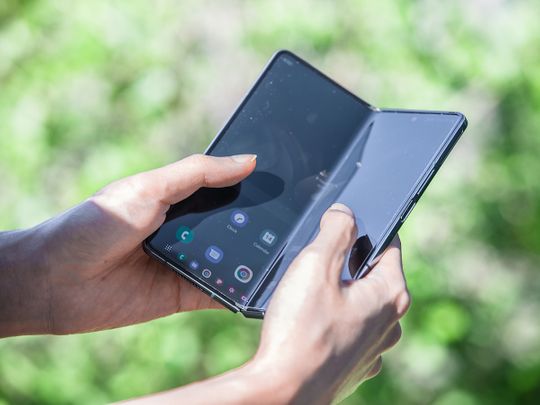
Smartphones are what we spend the most time with, even more than with our loved ones. The device form is now the key enabler of the consumer electronics value chain - and almost an extension of our body.
While the smartphone market may never see the same meteoric growth it did some years ago, the all-powerful pocket computer surely is going to stay on forever. At this point, it's hard to function in society without one, and that is not going to change any time soon. A small percentage of users will get the newest high-end model, many will opt for the mid-to-high range products, and others will use the basic product until it falls apart.
One thing is certain. The form factor and specs will keep evolving. The world is comfortable with the candy bar design, and that will stick around for quite some time, but a significant portion of the market will become foldable.
Foldable phones can change the way content is consumed. These devices can change to a different size to perform a specific task. As the smartphone market shifts, people are surely going to be looking to get more utility out of that one device.
What about battery technology?
One feature that has the potential to become more common is improved AI and machine learning capabilities. Battery technology is another feature ripe for innovation. Smartphones keep getting major upgrades to cameras and sensors, but interestingly, batteries have not changed much.
Alternatives to lithium-ion batteries will allow for faster charging and longer battery life. Some technologies even allow batteries not to lose capacity over time.
Imagine that a phone runs out of battery and there is no charger immediately available. That may not be a problem in a few years’ time, as it is expected that the next smart devices can be charged wirelessly over the air. There are also devices being planned whose battery could be charged by solar power. This will be a much-needed boost as the global order is shifting to more and faster data consumption and longer hours of usage on the device.
It will be interesting to see whether brands would improve battery technology soon, or prefer the current strategy of selling newer models each year.
Since 2017, demand for new phones has been on the decline. China and North America have been the biggest drivers of negative growth. Global inflation and an uncertain environment are making consumers reluctant to make faster upgrades to their devices. Re-furbished and used phones create another big dent.
India, African can bring up more growth
The thing to consider is that there are opportunities in markets that are still under-served. Africa is one continent where many of the phones in use are still feature phones, not full-fledged smartphones. There is also immense potential in India’s 5G expansion.
About 10 years ago, no-one could imagine how much smartphones would evolve in a decade. However, smartphone technology has accelerated so much that the first smartphones now seem like primitive dinosaurs.
Eighty per cent of the world population has a cell phone. We look at our phones an average of over 100 times a day. My view is that AR and VR will surely create a buzz and pockets of interest, but may never come close to the popularity of a smartphone…









